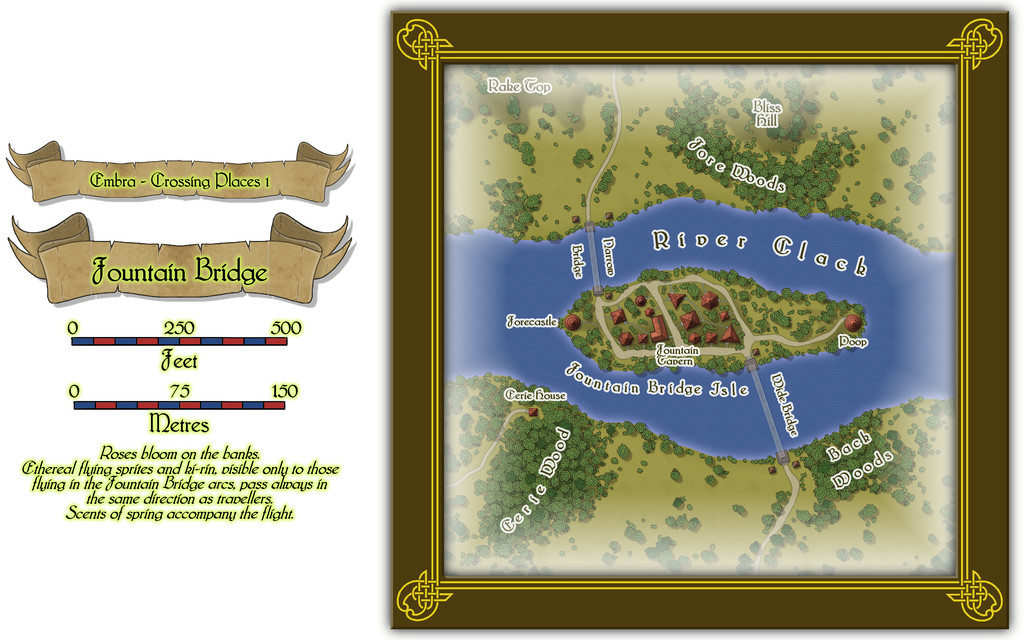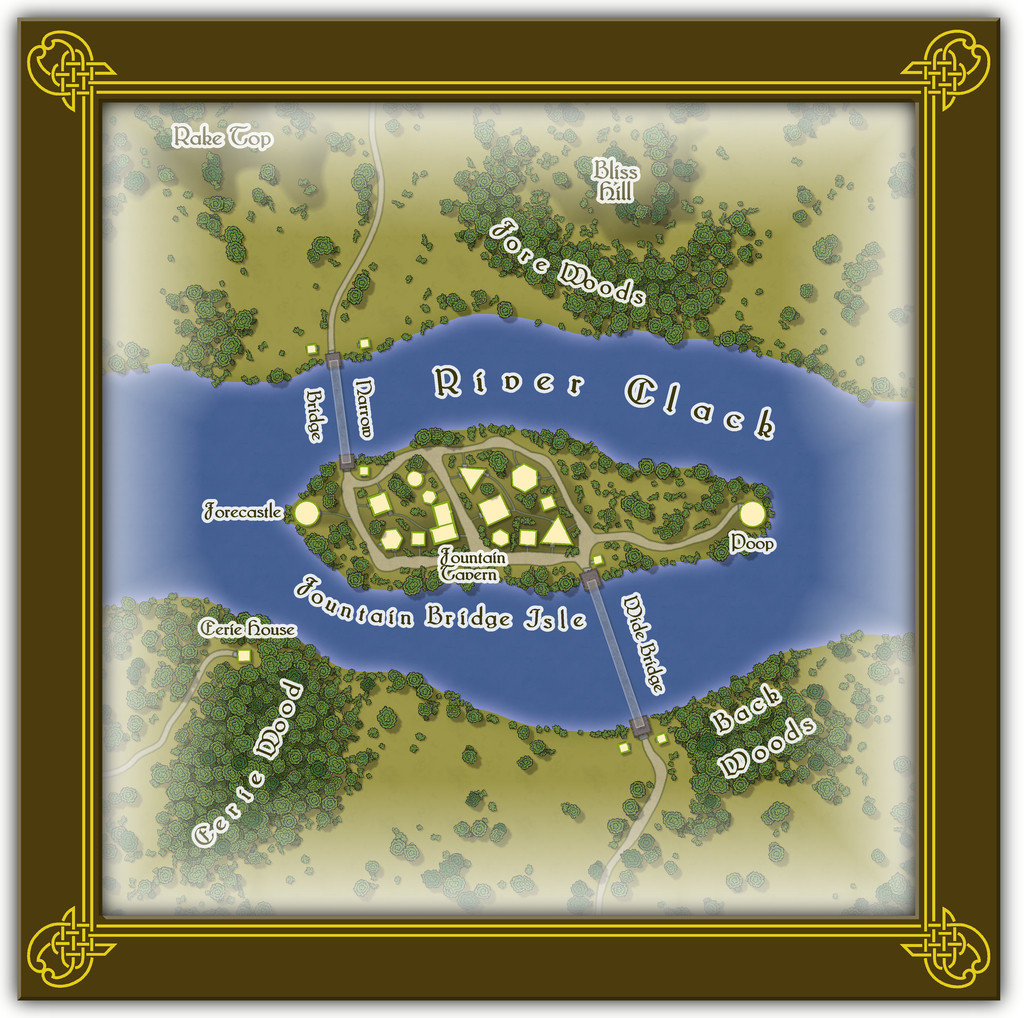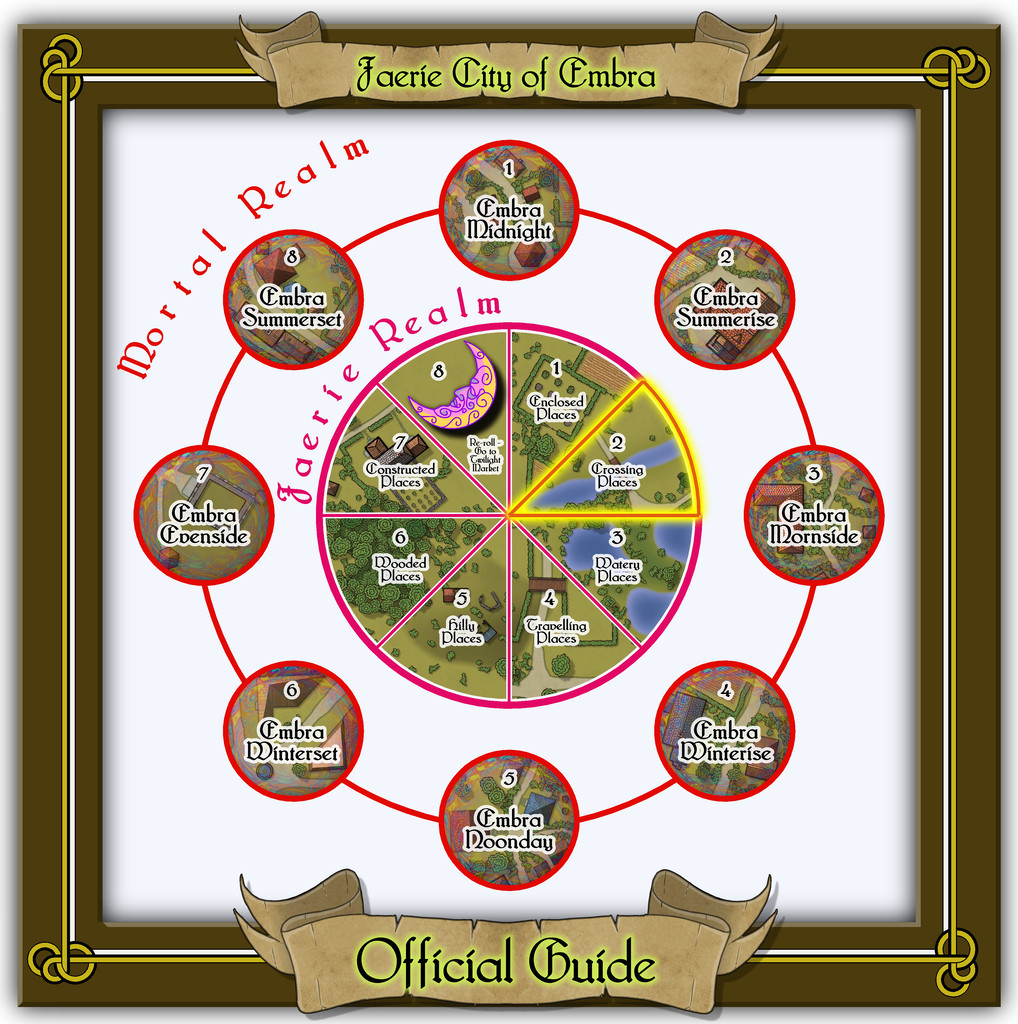
Wyvern
Wyvern
About
- Username
- Wyvern
- Joined
- Visits
- 3,157
- Last Active
- Roles
- Member
- Points
- 5,382
- Rank
- Cartographer
- Badges
- 24
-
Community Atlas: Embra - Crossing Places
The first Crossing Place is Fountain Bridge:
This has a small, scattered village on its central island, for which a toggle in the Atlas FCW file should allow the simple interior layouts to be seen (all have just a single storey):
On this somewhat more detailed view, it may be possible to make out that the two bridges seem a little odd - they appear to be translucent. This is not a mistake, as there are no solid, permanent bridges here in fact. Both are literal water-fountain features. The travellers stand atop one of the square stone bridge abutments, and are then catapulted across in a gentle arc by a tremendous pulse of water. They arrive dry and safe a few seconds later on the opposite abutment - unless someone panics, in which case, they may end up getting wet, or even dropping into the river, to be rescued by the omnipresent water faeries, who think such a thing a tremendous joke! Animals - except magical or Faerie types - cannot use the bridges at all, however. Text and PDF files explain a little more, although Eerie Wood and Eerie House remain as mere mysterious names, to be expanded only should GMs wish to do so.
-
Community Atlas: Embra - Crossing Places
Having discussed the design ideas, methods and overall appearances/layouts for the various Embra "Places" maps in the opening Enclosed Places topic, I'll not reiterate those points here, unless relevant. So moving on, the second set of Places of Interest the Embra "Official Guide" map gives access to, are the Crossing Places:
I thought a simpler criss-cross kind of frame corner decoration might be interesting here, partly inspired by that used for the Official Guide map. While the lines along the map edges are easily drawn in CC3+, there was a more elaborate corner-piece in another of the Dover Clip-Art "Celtic Borders on Layout Grids" hardcopy book designs that I thought would add a little more elegance to this map than my own clumsy efforts were able to achieve. As was established for the first of these "Places" link-maps, the link-spaces themselves are just labelled extracts from the actual maps, with added notes for the benefit of GMs, and further reminders in the accompanying text and PDF files. The seven streets condensed into one map here makes for fewer links than some of the "Places" diagrams, though it did mean making that link point larger, to fit all the names in. As luck had it, I somehow managed to get the dragon in just the right place here to avoid running into problems with it wanting to feature itself in others of the link-squares when I added the Dragon Bridge map extract, as of course it's a complete symbol, considerably enlarged, not something that can be easily dismantled to stop it from doing that otherwise!
-
The Creepy Crypt project
-
Community Atlas - Dunor Valley - Mt Hasilig Region
-
Community Atlas: Embra - Enclosed Places
Many thanks everyone for your kind comments, "Likes", and so forth. Haven't been on here for a couple of days, so apologies if I've seemed to be ignoring anyone.
I've been working on this group of maps for about six months now, so I've tinkered around with quite a few options, some of which worked better than others, and some of which have ended-up as something of a compromise. I went with the paler mists in the end (and there are some minor variations in the colouring and density in places) as I wanted Embra to be "lighter" in tone generally, although there are a few less welcoming spots too (we'll get to those...).
Well, once the maps are in the Atlas, it should work a little like this, once you find Embra at least. It might have been nice to be able to swap from map to map without needing the linear Atlas structure, but the set was designed specifically for use that way.
They're my own interpretations of images from randomly-drawn tarot cards. These are the notes regarding them that I gave in the opening "Embra" Forum topic:
A few notes were added in the process, but I wanted more, less predictable, aspects too. I turned to two tarot decks, which each coincidentally consist of 78 cards. One card was randomly drawn for each Village, Place and Street from either deck, and extra comments added to the map. The decks were Tarot of the Secret Forest (although this online review page has a lot more images), illustrated by Lucia Mattioli (Lo Scarabeo, 2005), and Shadowscapes Tarot, illustrated by Stephanie Pui-Min Law (Llewellyn Books, 2010). Both are heavily Faerie-inspired in their designs.
The texts were also designed to fit the available space next to the map, and how much text you can type into a single text-box in CC3+, so some of the descriptions were amended because of those constraints too!










